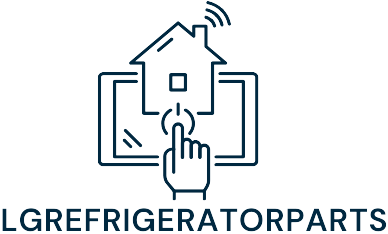Table of Contents
ToggleIn the unpredictable world of real estate, knowing where the market’s headed can feel like trying to predict the weather in a rainstorm. One minute it’s sunny and the next, a downpour of uncertainty hits. That’s where real estate forecasting comes in—like a crystal ball for savvy investors and homebuyers alike.
Imagine having the power to anticipate market trends, property values, and investment opportunities before they even make headlines. With the right forecasting techniques, it’s not just wishful thinking; it’s a strategic advantage. Whether you’re a seasoned pro or a curious newcomer, understanding these trends can help navigate the choppy waters of real estate with confidence and maybe even a little flair. So buckle up as we dive into the art and science of real estate forecasting, where insights can turn into profits and dreams can become reality.
Overview of Real Estate Forecasting
Real estate forecasting involves predicting future market conditions, property values, and trends within the housing sector. Practitioners utilize various techniques, including statistical analysis, economic indicators, and historical data, to inform their predictions. By examining factors such as employment rates, interest rates, and demographics, professionals gain insights that help them understand market dynamics.
Forecasting tools can help investors make informed decisions during fluctuating market conditions. They identify opportunities and risks, enhancing an investor’s ability to capitalize on timely purchases or sales. Analysts often utilize Comparative Market Analysis (CMA) and trend analysis to anticipate shifts in property values, ensuring a comprehensive approach to forecasting.
Economic indicators play a critical role in assessing the health of the real estate market. Metrics like Gross Domestic Product (GDP) growth, consumer spending, and housing starts provide a clearer picture of overall market activity. Understanding these indicators equips readers to interpret market signals effectively.
Comparing local market conditions can reveal nuanced trends often overshadowed in national reports. Regional variations in housing supply and demand emphasize the need for localized forecasting strategies. Armed with this knowledge, real estate professionals can tailor their investment strategies for specific markets.
Real estate forecasting embodies both art and science. While data analysis provides objective insights, market sentiment and buyer behavior influence trends. A balanced approach to forecasting incorporates both quantitative data and qualitative insights, resulting in better-informed decisions.
Importance of Real Estate Forecasting

Real estate forecasting plays a vital role in making informed investment decisions. Investors and homebuyers who utilize these forecasts can anticipate shifts in market conditions, leading to strategic advantages.
Economic Indicators
Economic indicators significantly impact real estate forecasting. Employment rates, interest rates, and GDP growth serve as essential metrics. A rising employment rate often correlates with increased housing demand. Conversely, high interest rates may deter potential buyers, sparking a decline in property sales. Experts analyze these metrics to gauge the overall health of the market, thereby enhancing their forecasting accuracy.
Market Trends
Market trends provide insight into future property values and buyer preferences. A shift toward urban living, increased remote work, or a growing focus on sustainability illustrates the changing landscape. By examining sales data, inventory levels, and demographic shifts, real estate professionals can identify emerging trends. Such analyses enable investors to pivot strategies effectively. Staying updated on these trends helps navigate the complexities of real estate, allowing for timely and profitable decisions.
Methods of Real Estate Forecasting
Real estate forecasting employs various methods to predict market conditions and property values. These methods fall into two primary categories: quantitative and qualitative approaches.
Quantitative Approaches
Quantitative approaches rely on numerical data and statistical techniques. Analysts gather historical sales data, current market metrics, and various economic indicators for analysis. Regression analysis often assists in understanding relationships between variables, such as employment rates and housing prices. Time series models also help forecast future trends by examining historical patterns. By analyzing economic indicators like GDP growth and consumer spending, professionals can gauge potential market shifts. Such data-driven methods enable informed decision-making in fluctuating markets.
Qualitative Approaches
Qualitative approaches focus on factors that numerical data cannot fully capture. Expert insights from real estate professionals provide valuable context around market dynamics. Factors like consumer sentiment, buyer preferences, and local knowledge contribute to market understanding. Property surveys can also reveal trends in buyer behavior and community developments. By combining qualitative insights with quantitative data, analysts can form a holistic view of the market. This blended method enhances the accuracy of forecasts and reflects real-world complexities beyond mere statistics.
Challenges in Real Estate Forecasting
Real estate forecasting faces various challenges that can complicate accurate predictions. Understanding these obstacles helps investors and homebuyers navigate the market more effectively.
Data Limitations
Data limitations hinder precise forecasting efforts. Inaccurate or incomplete information can skew analyses, leading to unreliable projections. Issues such as outdated statistics, inconsistent reporting, and regional discrepancies further complicate the landscape. Limited access to comprehensive datasets can prevent analysts from gaining insights into critical trends. Additionally, qualitative measures often lack the depth needed for thorough evaluations. Forecasts based on insufficient or poor-quality data may yield misleading conclusions about future property values or market conditions.
Market Volatility
Market volatility presents another significant challenge in real estate forecasting. Economic factors such as fluctuating interest rates can dramatically alter buyer behavior. Sudden shifts in employment rates or unexpected global events introduce uncertainty into the market. Changes in consumer preferences, such as a rise in remote work, also impact demand unpredictably. Forecasting requires a careful analysis of these dynamic influences to develop accurate predictions. Analysts must stay updated on evolving trends while considering external elements that can disrupt stability, making consistent forecasting a complex endeavor.
Future Trends in Real Estate Forecasting
Emerging technologies are transforming real estate forecasting, changing how data is analyzed and interpreted. Artificial intelligence and machine learning enhance predictive accuracy and offer deeper insights into market trends. Implementing these technologies enables analysts to sift through vast datasets quickly, uncovering patterns that influence property values.
Remote work continues to shift housing demand, resulting in increased interest in suburban and rural properties. This trend indicates a potential decline in urban property values in some areas while highlighting opportunities in more spacious markets. Understanding these shifts allows investors to readjust strategies in alignment with evolving buyer preferences.
Sustainability holds growing importance, prompting a focus on energy-efficient and eco-friendly properties. Increasing consumer demand for green features influences property desirability and value. As regulations and incentives for sustainability evolve, their impact on future property investment decisions becomes essential.
Economic forecasts signal fluctuations, maintaining relevance in real estate forecasting. Analysts track key metrics, including inflation and interest rates, to evaluate market health and buyer behavior. An understanding of these economic indicators ensures stakeholders are prepared for market changes.
Data visualization tools enhance communication, making complex information accessible. By presenting forecasts visually, stakeholders can grasp trends and data implications with ease. Utilizing these tools promotes informed decision-making throughout the real estate sector.
Collaboration between industry professionals strengthens the forecasting process, combining diverse insights to refine strategies. Developers, realtors, and financial analysts can share observations, improving collective understanding of market dynamics. Engaging in strong communication networks fosters successful forecasting efforts.
Overall, adapting to future trends in real estate forecasting necessitates a proactive approach, merging innovative tools with thorough market insight. Keeping pace with these trends equips stakeholders with essential knowledge, enabling them to navigate an ever-changing real estate landscape effectively.
Real estate forecasting is essential for anyone looking to succeed in today’s dynamic market. By leveraging both quantitative and qualitative methods, investors and homebuyers can gain a clearer understanding of future trends and property values. The integration of advanced technologies and data visualization tools enhances the ability to make informed decisions.
As the market continues to evolve, staying attuned to economic indicators and emerging trends will be crucial. A proactive approach that combines analytical insights with collaborative efforts among industry professionals can lead to better outcomes. The ability to anticipate shifts in demand and preferences will ultimately empower individuals to navigate the complexities of real estate with confidence and precision.



